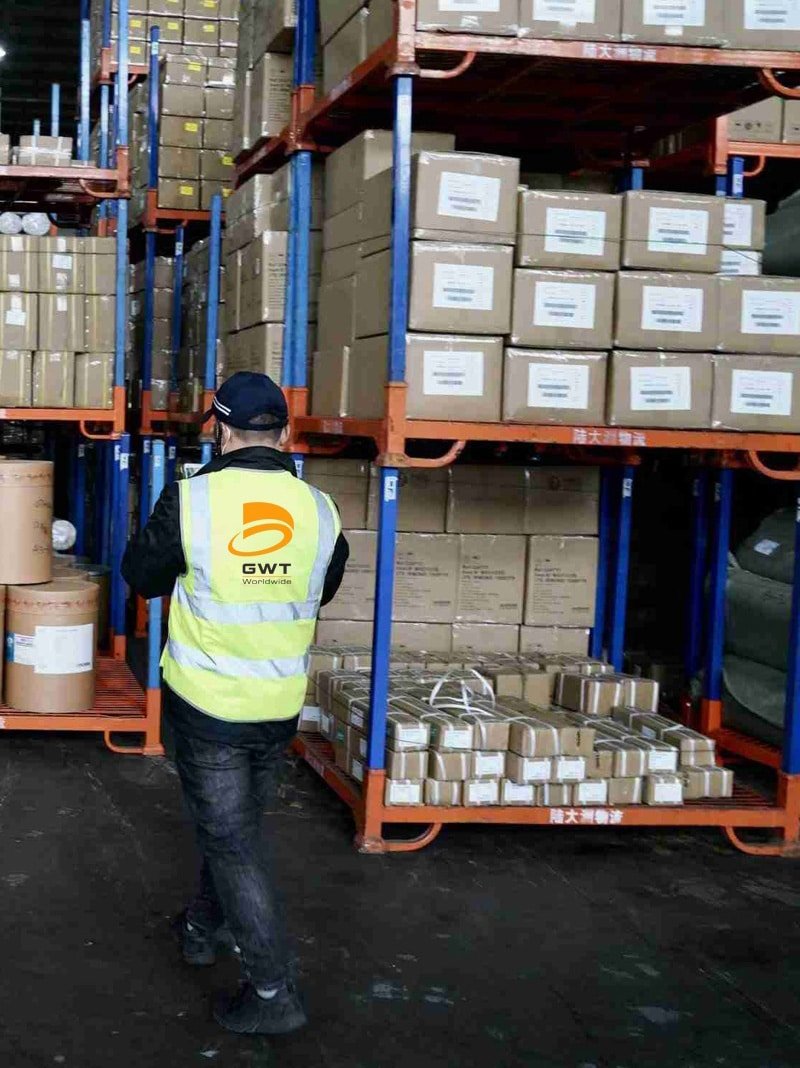International trade is associated with elaborate logistics plans where specific responsibilities between buyers and sellers ought to be understood. The term Carriage Paid To (CPT), an essential international trade term, is one of the most critical notions of global trading and is an Incoterm that is used to specify the obligations of both sides of a deal. This mini encyclopedia discusses all about CPT terms and this is what businesses ought to learn to be able to deal easily in international trade.
Understanding Carriage Paid To (CPT) Basics
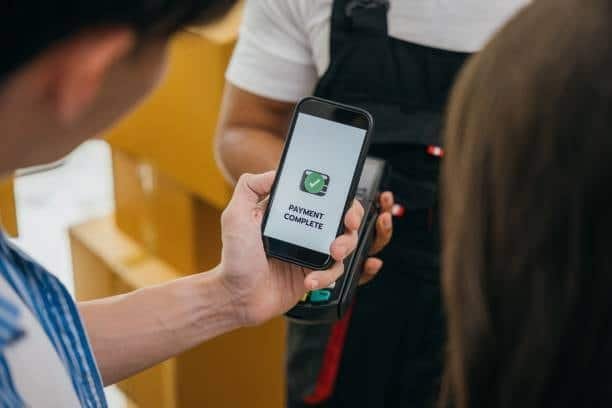
One of the eleven Incoterms that are created by the International Chamber of Commerce (ICC) is the Carriage Paid To (CPT). On the basis of CPT, the seller has to take charge to organize and pay the transportation of goods to a specified location. The risk of loss or damage however shifts to the buyer as soon as they give the goods to the first carrier and that is where there is a difference between cost responsibility and risk transfer.

It is this setup that makes CPT pretty favorable to businesses who wish to obtain fixed shipping prices, but still want to reduce transportation risks and have a reasonably well distributed risk. Logistics are coordinated under the seller, and the transportation process is managed professionally, whereas the buyer bears a risk as soon as goods start traveling. This is a key principle to understand by the participants of the international business, in accordance with the cpt rules .
The CPT term is also applicable to different forms of transport such as multimodal transport system hence it can be used in different shipping conditions. CPT offers a standardized framework which both the counterparts can apply whether the goods are transported to the agreed upon destination by air, sea, rail, and by road. This has enabled CPT to become more popular in the contemporary international trade.
Key Responsibilities Under CPT Terms

Under Carriage Paid To, the seller is faced by the heavy logistic obligations. They have to contract transport, pay freight fee and cover export fees to the nominated destination, and also undertake export clearance process. There is also issuance of commercial invoices, packing list and transport documents by the seller to enable the buyer accept the delivery of goods.
The major duties of the buyer will be clearance of imports, payment of import duties and taxes on imports and also take insurance at the option of the importer. The transfer of risks early in the process may make buyers, depending on their buyer wishes, prefer to obtain extensive insurance covers to guard their interests when they are transported. The buyer should also be ready to pick the goods at an agreed destination.
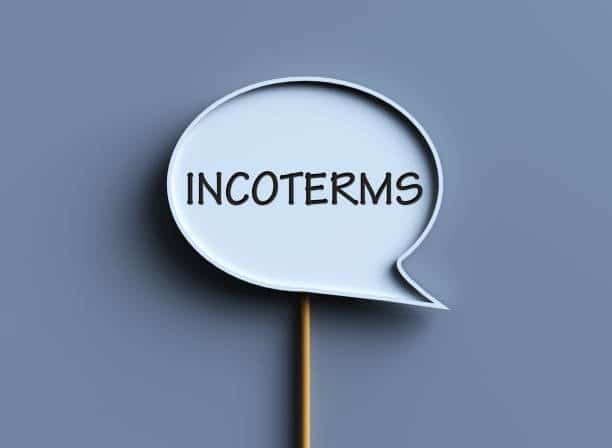
Under the terms of CPT, the aspect of communication between parties is vital. The seller should give sufficient advance information of shipment terms, anticipated arrival, and the documentation that would be required. In the meantime, the buyer must make sure that they are well prepared with correct import clearance documents and also able to receive goods right after they are imported. Effective communication eliminates wastage of time and extra expenses, making it easier to arrange insurance cover .
Both sides also gain through being aware of what they are supposed to do. Any misunderstanding on duties may cause a conflict, extra costs, and even bad working relations. The specific requirements or departure from the provision of standard CPT terms should be properly described when negotiating a cpt agreement.
Risk Transfer in CPT Arrangements

The most important thing about the terms regarding CPT is a time when risk is damaged by a seller and assumed by the buyer. CPT separates risk transfers and costs transfer unlike in some Incoterms where they both shift at the same time. Risk passes on the delivery of goods onto the first carrier but still the seller pays the cost of transport up to the identification of its destination.
This is early risk transfering and buyers ought to look keenly on insurance options. Although sellers usually cover costs, the insurance paid may not be applicable to high value goods or specialized cargo. To guarantee a complete cover during the course of the journey, buyers tend to acquire extra protection cover.
Determination of the point of risk transfer comes in handy and allows both sides to prepare properly. Before transferring goods to carriers, sellers have to make sure that goods are well packaged and documented. It must be known to the buyers that they would be responsible, and that the buyer assumes responsibility, in case of loss or damage happens to a product in transit despite not having paid the transportation charges.

Risk transfer mechanism in the term of CPT is informed by the reality of international shipping. When goods are out of the control of the seller in the transport network, it is subject to a lot of factors beyond the control of the seller and this impacts on the shipment. This type of risk sharing makes the buyers become more interested in taking proper measures of protection whilst the seller assumes core competencies.
CPT vs Other Incoterms Comparison
CPT is very different to other widely used Incoterms such as FOB, CIF and DDP. CPT risk transfer differs with FOB (Free on Board) in that, where FOB risk transfer is made at the shipment port, with CPT goods would have transferred to the risk at the first carrier, which might be at either the seller premises or the pickup point. This difference carries a special significance on inland transport logistics where the seller pays freight charges until the first carrier .

In comparison with CIF (Cost, Insurance, and Freight), seller in CPT does not provide insurance cover. Sellers will be required to ensure a minimum insurance cover under CIF conditions, whereas under CPT the buyer will take the decision on insurance. This flexibility gives a chance to buyers to select insurance covers that suits their exact need and risk appetite, particularly when dealing with air freight carriers .
DDP (Delivered Duty Paid) is the complete opposite to CPT and here the responsibility of the sellers is on till the time the goods are delivered to the premises of the buyer. CPT forms a compromise avenue, creating an avenue of security in the costing aspect without subjecting the process to the hassles of the import process that sellers may not be prepared to tackle effectively.
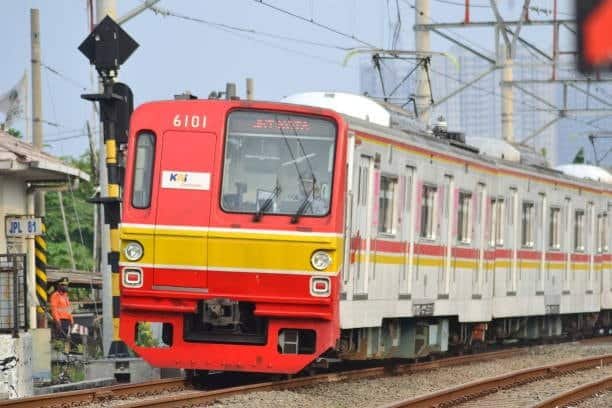
It is through these differences that businesses manage to select the best suit Incoterm to be used based on their situations. CPT is appropriate when the seller provides good logistic facilities but knowing little about the import procedure in the destination country and the buyer wants to control the importation process and insurance coverage.
Documentation Requirements for CPT

Successful CPT transactions require proper documentation. The sellers need to supply within commercial invoices what is being sold, in what numbers and at what agreed prices. Packing lists are to determine contents of shipment whereas transport documents are used to document that goods have been delivered to carriers as per the CPT terms.
The requirements such as export documentation depend on the country of origin and sometimes on the product category and usually will include export licenses, certificates of origin and customs declarations. The sellers should make sure that all the requirements of the exports of goods are settled before they are moved out of their country. Inability to present the necessary documentation may lead to the delay of shipments, extra expenses or even the seizure of freights.
Upon arrival of goods buyers require import documentation to be available. This also comes in the form of importation licenses, permits of restricted items and the customs clearance documents. Availability of documentation saves time and it avoids charge levied in the storage at the destination ports or terminals.
International trade has been progressively using electronic documentation systems, which are quicker and have lower chances of error in transcribing paperwork. Hence, most logistics companies are delivering digital platforms to ease documentation, and cpt transactions are now simplified on both sides.
Insurance Considerations Under CPT

Insurance is important to CPT arrangements because the buyers bear risk at an early stage of a transportation process. Although sellers are not needed to transport insurance under CPT conditions, buyers are supposed to consider their freight charges and insurance requirements critically. The normal carrier liability is usually insufficient and is not going to cover losses completely.
Broad coverage cargo insurance usually covers loss or damage of physical goods during transit, risks such as theft or collision, natural disaster or contribution under the concept of general average in marine transport. The buyers are advised to engage the services of the entity responsible, skilled insurance brokers so that they receive sufficient cover that corresponds to risks of their particular cargo and routes.
The time of insurance cover is vital when associated with CPT. Once goods go to the first carrier that is when the risk is being transferred and insurance should work up to the time goods reach their final destination. Lapses in coverage might result in major financial losses to buyers.
Others will set purchase annual insurance policies that help in the coverage of a number of shipments where as others will insure purchases on an individual transactional basis. The selection is tied to the rate of shipping, values of cargo and risk aversion. There are professional services involved in logistics who will be able to advise on proper insurance plans.
Cost Structure in CPT Transactions
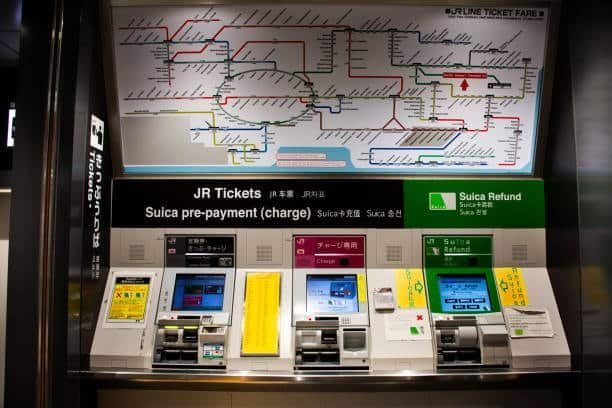
CPT pricing systems are transparent and predictable to both. All transportation costs to the specified location are all paid by the sellers which entails primary carriage, handling charges as well as intermedial transportation. This structure enables the buyers to budget well as transport expenses are fixed. The buyers, however, have to plan on the import duty, taxes, terminal handling charges custom clearance fees and the other transport costs once they are at the said destination and want to get it to their own destination. Knowledge of the overall landed cost is useful to enable buyers to make right decisions when it comes to purchasing its products and yet sustaining a competitive pricing. Volatility of currencies has the potential to affect the CPT arrangements especially on a long term contract. Other parties opt to include currency adjust facilities or lock exchange rates at the time of signing the contract to give extra certainty on costs. Professionals in advancing logistics services tend to advise companies on how to deal with the currency risk. This may attract some hidden costs, in case the parties fail to give a clear definition of the named destination and the services that come along. Buyers ought to know all that is covered in the sellers travel package and what other expenses they may be subjected to during their arrival.
Common Challenges and Solutions
Communication failures make up one of the widespread complications of CPT agreements. The sellers are not particular about the freights and the buyers are not ready to receive goods when necessary. Having defined communication rules eliminates most of the problems, especially when multiple carriers involved, and enables the transactions to go smoothly.
Inaccurate documentation may lead to serious retardations and expenditure of extra money. Paperwork can easily lead to customs detention, warehousing costs or in some cases shipment returns due to incomplete or inaccurate documents. Both sides need to carry out stringent document review procedures and create duplicates of all vital paperwork.
Selecting wrong means of transport or routes may affect delivery schedules and prices. Sellers ought to engage into business with logistics companies that are vastly experienced of the most efficient routing methods of particular type of cargo and its destinations. The experience of professionals assists in reducing the cost and the time of transit.
One of the common insurance cases is experienced when there are losses during transit. When coverage terms, claim processes, and types of documentation that one must bring forth are clear, the problems can get solved quickly. Customers are advised to deal with high reputation insurance companies dealing in international cargo insurance.
Best Practices for CPT Implementation

To achieve successful CPT implementation it is important to plan well and have clear communication among all parties. The sellers must collaborate with well-established logistics companies that understand the market of destination country and well-established means of transport as well as the carrier contracted . Selection of the proper logistics partner plays an important role in the success of transactions.
The specification of which destination is named and any agreed deliver instructions should be clearly stated in contract negotiation. Poor descriptions of destinations may cause controversies and extra expenses. There should also be agreed ways of notification, documentation and addressing of issues that may arise unexpectedly.
The constant communication during the transaction process allows determining the possible issues and eliminating them in time. Sellers are encouraged to give tracking details and frequent information whilst buyers are expected to give information about any Sea freight changes in requirements or preferences beforehand.
The documentation management systems ensure that all the obligatory paperwork is available and ready whenever needed. The digital systems are faster, accurate, and easily accessible and therefore are gaining popularity with regard to international trade transactions.
Legal Implications of CPT Terms
CPT terms have certain legal connotations that ought to be perceived by both parties. The rules of Incoterms enter the sales agreements and gain the legal status of duties buyer’s warehouse. Abandoning CPT requirements may lead to conclusion of cases on breach of contracts and financial responsibility.
resolution mechanism. Only international transactions can be characterized by the need to facilitate several legal systems to be involved in the transaction export requirements, thus it is crucial to determine the jurisdiction to cover the transaction itself, and in case of dispute resolution costs incurred.
Both parties should know about liability limitations that apply to CPT terms. Although sellers pay transportation expenses tied to the sales contract , their liability normally stops at the point of delivery of the goods to third party carrier. Buyers ought to make sure that they are sufficiently situated with insurance or carrier responsibility commercial invoice international commercial terms and cpt incoterms.
Complicated CPT arrangements or large-scale transactions should be advised by professional legal advice. Competent international trade lawyers can assist in the arrangement of agreements that accommodate the interest of both parties whilst still ensuring that the laws and policies established are followed and are in accordance buyer’s responsibility.
Technology and CPT in Modern Trade

The digital change is transforming CPT applications with the advancement of tracking, communication, and documentation systems. Ability to track packages in real time enables both parties to see the progress and be prepared to any difficulties which may appear on the way shipping terms.
The documentation processes are simplified using electronic data interchange (EDI) systems, and the number of mistakes related to the manual paperwork is reduced. Such systems have the ability to automatically create necessary documents, check the accuracy of the information, ensure faster customs clearance exercise seller is responsible.
International trade is playing a lead role in having blockchain technology as a solution to secure transparent documentation management. Although they are in their developmental stages, blockchain applications can offer immutable detailed records of the CPT transactions and increase matters of trust between parties.
The implementation of artificial intelligence and machine learning allows optimizing routing choices, estimating possible delays, and enhancing the effectiveness of the whole supply chain. Such technologies enable the logistics providers to provide superior services using CPT arrangements.
Industry-Specific CPT Applications

Various industries have different necessities, which influence CPT execution. CPT is frequently applied in manufacturing companies when it comes to raw materials and components, as these enterprises may govern the procedures of imports, having the advantage of suppliers with the experience of logistics. Such a setup is effective when it comes to multiple carriers and well-established supply chains with predictable shipping patterns. In the retailing business, CPT of the imported finished goods is commonly used especially when arranging with overseas suppliers with well-developed logistics services. CPT provides retailers with the opportunity to have control of import duty and custom procedures coupled with the benefit of utilizing the knowledge of suppliers on shipments. Time sensitive industries which are high-tech in nature tend to make advantage of CPT contracts which incorporate expedited transportation. Cost/speed balance is key in an environment: short life cycle products or seasonality demand patterns. The agricultural exporters often use CPT terms owing to the nature of special transportation needs in transportation of perishable goods. The knowledge of the sellers in the right way of handling, maintaining temperatures, and speedy routing aids to guarantee products all through the supply chain.
Future Trends in CPT Usage
CPT implementations are also seeing changes that are being influenced by the environment as the businesses look into finding sustainable modes of transportation. Logistics programs such as green logistics like carbon neutral shipping and fuel efficient transportation lines are also becoming consideration in carrier selection. Automation within the logistics process is transforming the way CPT arrangements are dealt with and handled cpt transaction. These technologies are raising efficiency, minimizing the expenses in transport networks where the shipments of CPT routes are fulfilled using automated sorting, robot warehouse, and autonomous vehicles air freight carrier. There is greater complexity in regulation of international trade that is impacting the documentation of CPT and its compliance. Business is required to keep up to date with the evolving regulations and make sure that their CPT activities can adjust to the new demands in the country of origin and destination. Economic and regional trade agreements are bringing about new venture of CPT applications. The economic zones are characterized by streamlined processes of customs and fewer barriers on trade which makes the CPT terms more appealing to businesses involved in the economic zones cpt price.
Conclusion
The terms of Carriage Paid To (CPT) provide a level road towards international trade that incorporates both predictability of cost along with fair risk assumptions seller delivers. Sellers enjoy having control over transportation and at the same time risk shifting at the right stage of the logistics chain. Buyers achieve certainty on costs including freight rates but still have control on the importation process and the insurance. CPT can only be successful when communication is clear, documentation is done correctly and companies select logistic partners who have the experience in international trade and know what must be done.
About GWT Worldwide
GWT Global is one of the professional logistics companies that focus on providing international freight forwarding e-commerce services, global supply chain services as well as global logistics services. An experienced international logistics provider specializing in Air Freight & Sea Freight, China-Europe Railway Transport, International Express & Courier Solutions, Customs Clearance & Warehousing and Amazon FBA Shipping & Labeling Support, the GWT Worldwide Group offers high quality, economical and personalized international logistics solutions across the globe. Using modern technology and an international network of reputable partners, we make sure your goods are securely transported, fast, and high enough to meet the requirements.

